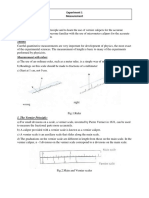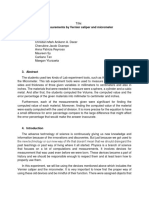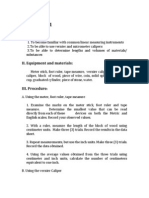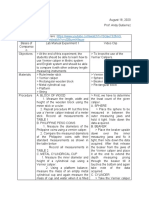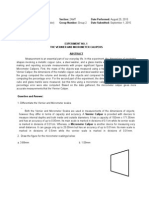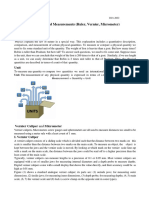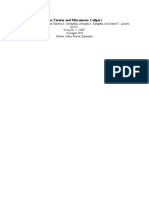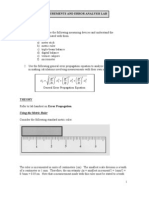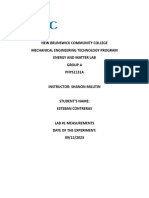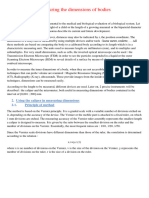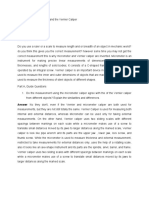0% found this document useful (0 votes)
168 views9 pagesPhysics Experiment
This document provides instructions for laboratory experiments measuring various objects using Vernier calipers and micrometer calipers. It includes objectives, theories of measurement, descriptions of how Vernier calipers and micrometer calipers work, examples of taking measurements, procedures for measuring the volume of a rectangular block, surface area and volume of a coin, and perimeter and thickness of an ID card. Data is collected and presented in tables. Questions at the end assess skills in significant figures and unit conversions.
Uploaded by
gapuzsawalCopyright
© © All Rights Reserved
We take content rights seriously. If you suspect this is your content, claim it here.
Available Formats
Download as DOCX, PDF, TXT or read online on Scribd
0% found this document useful (0 votes)
168 views9 pagesPhysics Experiment
This document provides instructions for laboratory experiments measuring various objects using Vernier calipers and micrometer calipers. It includes objectives, theories of measurement, descriptions of how Vernier calipers and micrometer calipers work, examples of taking measurements, procedures for measuring the volume of a rectangular block, surface area and volume of a coin, and perimeter and thickness of an ID card. Data is collected and presented in tables. Questions at the end assess skills in significant figures and unit conversions.
Uploaded by
gapuzsawalCopyright
© © All Rights Reserved
We take content rights seriously. If you suspect this is your content, claim it here.
Available Formats
Download as DOCX, PDF, TXT or read online on Scribd
/ 9



